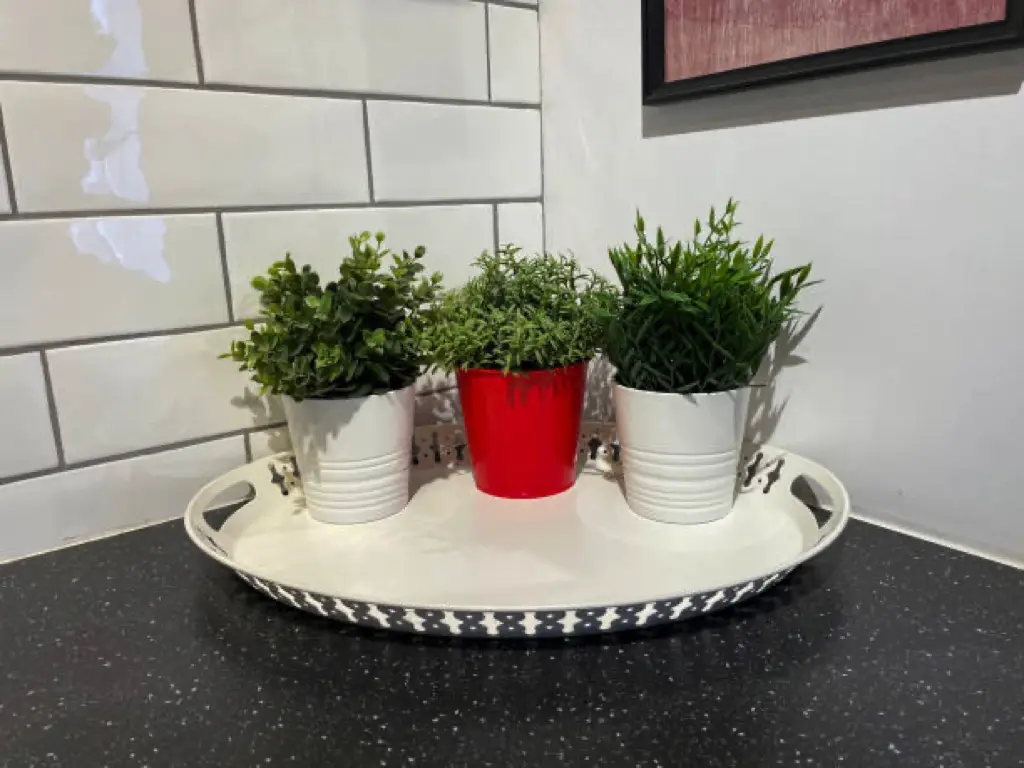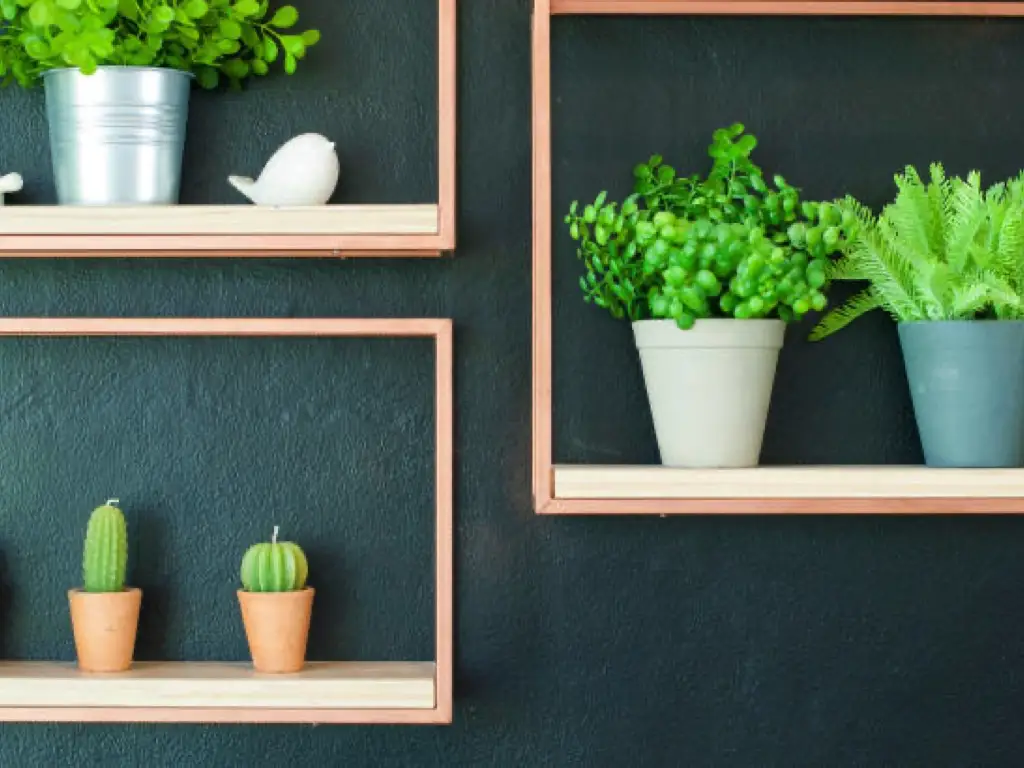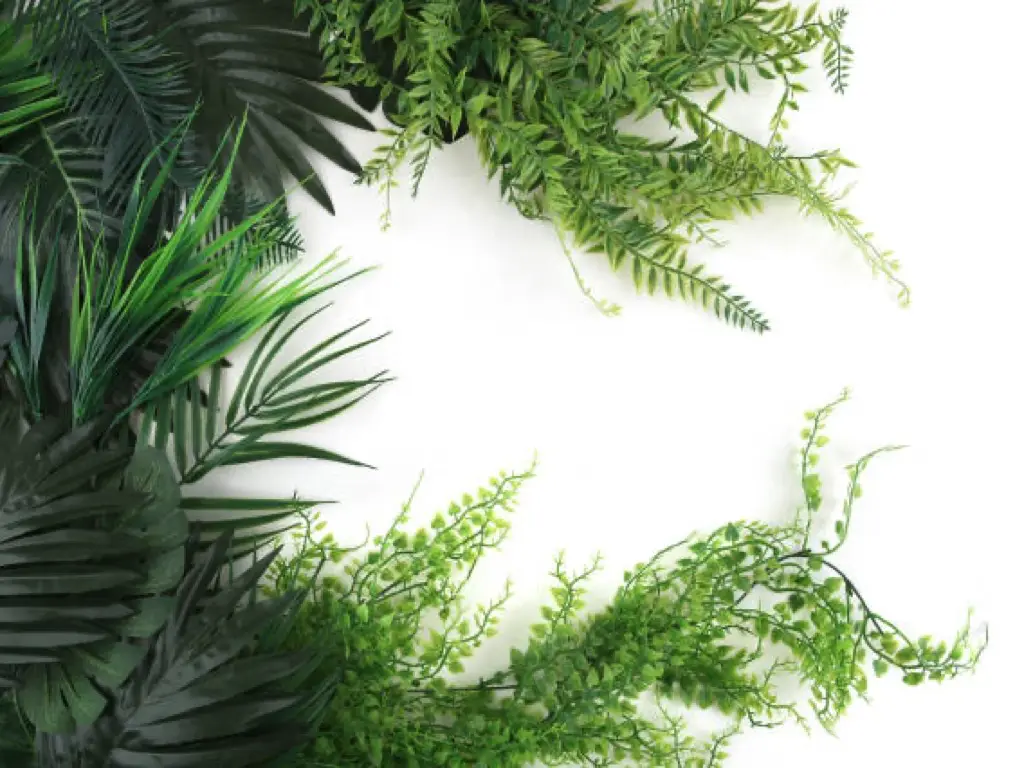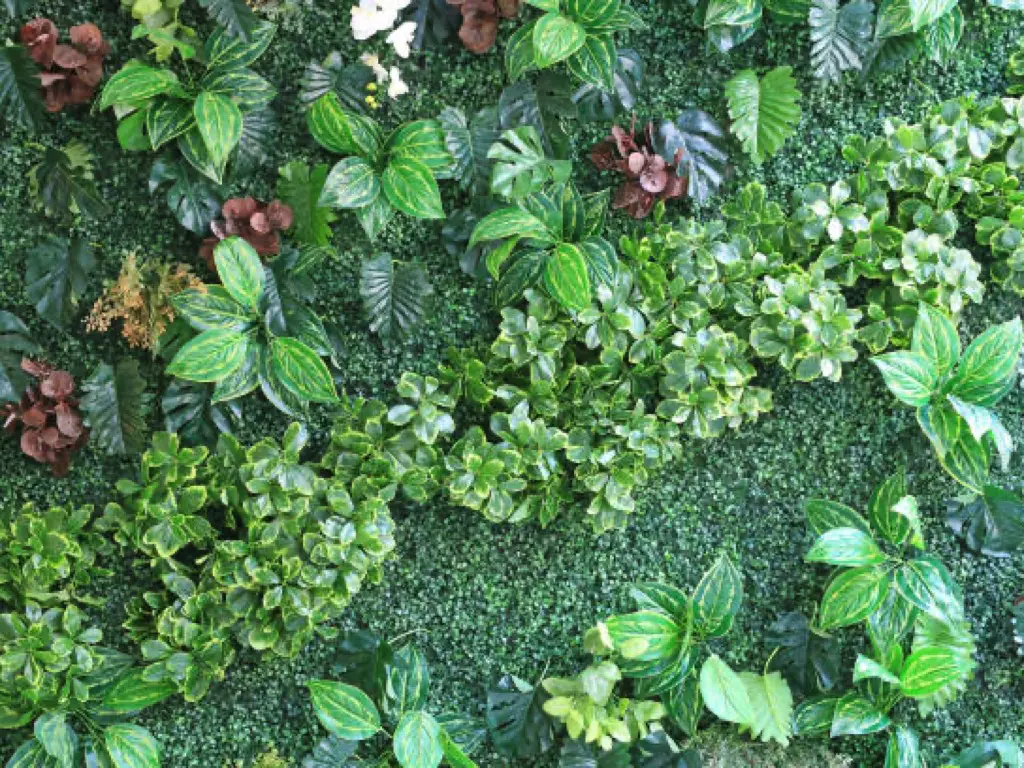Introduction to the World of Artificial Greenery
Ever wandered through Home Depot or scrolled through Amazon, eyes caught by the vibrant, lush artificial plants and thought, “Wow, those would brighten up my living room!” But then, the price tag makes you do a double-take. “Really? Why so pricey for something that isn’t even real?”
Well, there’s more to artificial greenery than meets the eye. Crafting these faux beauties—be it plants, succulents, or artificial flowers—demands high-quality materials and meticulous attention to detail. And when you’re looking for decor that won’t stir up allergies, these green gems are an excellent choice.
Consider this: the price of real flowers can add up over time, especially if you’re continually replacing them as they wilt and fade. In contrast, artificial flowers, sourced from premium materials, promise longevity and enduring appeal, making them a sensible choice for sprucing up spaces.
So, let’s delve deeper, peel back those synthetic leaves, and explore why investing in these faux wonders might just be worth every penny, especially when they can transform your living room or any space into a vibrant, allergy-free zone with their everlasting charm.

What Are Fake Plants Made of?
When it comes to faux plants, the materials are the real game-changers. They don’t just decide how they look, but also how they hold up against sun, fire, and whether they’re dodgy for health. Here’s a quick lowdown:
- Silk: It’s the classic go-to. Feels soft and looks real, but the sun can fade it, and it’s not the best around flames.
- Polyester: Your everyday choice. Handles sun better than silk but isn’t top-notch against fire.
- PVC (Polyvinyl Chloride): This one’s a tough cookie. Stands strong against sun and fire. Just watch out for the nasty chemicals; always go for the ones that are phthalate-free.
- PE (Polyethylene): This green buddy is bendy, giving it that natural vibe. Great against sun, but not the hero against flames like PVC.
- Latex: Feels real to touch, kinda in the middle with sun, but a champ around fire.
Here’s a cheat sheet:
| Stuff It’s Made Of | Sun Proof | Fire Proof | Anything Sketchy? |
| Silk | Not Really | Nah | All Good |
| Polyester | It’s Okay | Meh | All Good |
| PVC | Top Tier | Top Tier | Just Check |
| PE | Top Tier | Meh | All Good |
| Latex | It’s Okay | Top Tier | All Good |
Always remember, when shopping for these plants, stick with the trusted guys. You want the perfect mix of looking good and working great, especially for the pro folks out there.
Production Complexity: From Design to Final Product
Crafting an artificial plant isn’t as straightforward as slapping together green fabric and calling it a day. The process is akin to piecing together a jigsaw puzzle, where each part, from leaves to stems, is crucial. Let’s break it down.
- Design: This is where it all starts. It’s like sketching out a movie scene. For instance, imagine designing a faux Monstera leaf. A real one has those unique splits and holes. Nailing this design means studying countless Monstera leaves to replicate those patterns accurately. Do it wrong, and you’ve got a Monstera that looks more alien than tropical!
- Material Selection: This step dictates how real the plant feels and lasts. Take succulents: when made with high-quality silicone, they can feel soft and mimic the plant’s natural squishiness. But if you use cheap plastic? It’ll feel more toy-like and less convincing.
- Molding & Shaping: Now, the designs get a 3D life. Using the Monstera example, leaves are shaped using specific molds to get those precise cuts and curves. A good mold captures every detail, while a poorly designed one can leave the leaf looking flat and lifeless.
- Coloring: It’s not just green. The hue gradient on a single leaf can vary dramatically. When painting our Monstera, skilled artists would blend multiple shades to mimic how sunlight might hit the leaf, giving it depth and realism. A rushed job? You’d end up with a uniform, dull green that screams “I’m fake!”
- Assembly: The final jigsaw piece. This is where everything comes together. A well-assembled plant means branches that sway naturally and roots that sit just right in the pot. But if it’s hastily done, you might find leaves facing the wrong way or an unstable plant that topples easily.
At the end of the day, the nitty-gritty details in this production process separate the “wow, is that real?” from the “oh, that’s obviously fake.” Investing in the former means paying for top-notch design expertise and meticulous craftsmanship that’s worth every penny.

Size and Shape: Factors that Mainly Influence Cost
Alright, let’s dive into the world of size and shape in the artificial plant industry and how they impact the cost. Sure, we all have that buddy who’s the plant whisperer, showing off their lush indoor plants. But let’s talk about the unsung heroes: the fake plants. Size and shape? They’re not just about aesthetics; they’re about the complexity and cost.
- Molds & Materials: Remember the production intricacies we discussed? Now, amplify that for size. A small fake flower in a vase might need a pinch of premium silk materials and a dash of foam for structure. But scale that up to a towering artificial olive tree? You’re talking multiple molds, more materials, and a ton of detail. It’s like comparing a short story to an epic novel.
- Time & Labor: Crafting vines that twist in different ways or ensuring the durability of a large indoor plant takes a significant amount of time. A small eco-friendly succulent might take a day to perfect, but a life-sized evergreen? Weeks, if not more. More time means more labor costs.
- Realism & Details: Here’s where the real counterparts come into play. To make a fake plant indistinguishable from its living twin, every leaf vein, color gradient, and even the absence of germs is considered. A small décor piece might get away with fewer details, but a centerpiece? It needs to be spot on. Think about the difference between a quick sketch and a detailed painting.
- Storage & Shipping: Bigger plants require more space in warehouses and more careful handling during shipping. That gigantic faux tree isn’t going to fit in a standard box. Special packaging, often eco-friendly to appeal to conscious consumers, adds to the cost.
So, the next time you see a price tag on a large artificial plant, remember the journey it’s been on. From the selection of premium silk materials to the meticulous design process, it’s not just about filling space. It’s about bringing a piece of the outdoors in, without the maintenance, the pests, or the germs. And honestly, for many, that’s priceless.
Customization: Tailoring to Unique Needs and Designs
The allure of the artificial plant realm lies in its boundless customization possibilities. Craving a touch of tropical charm with palm trees in a city where they don’t naturally grow? You’re covered! Envisioning a specific foliage pattern to harmonize with your brand’s aesthetic? Consider it done! The magic of customization allows these faux wonders to morph to meet precise requirements and designs, which invariably impacts the cost.
It’s a realm far beyond grabbing a generic piece off a shelf at a local store. It’s about securing a creation that resonates with your brand’s vibe and your space’s ethos. Let’s delve into a bit of what this entails from a manufacturer’s standpoint, especially in a B2B landscape.
- Tailored Shape and Size: The geometry of artificial plants is crucial. Say, you’re eyeing an oversized monstera plant for a hotel lobby to create an inviting ambiance. The size and shape would need meticulous crafting to achieve the desired look, influencing the overall cost.
- Color Matching: Maybe you need a batch of cherry blossoms in a particular shade of pink to echo your brand colors. Custom color matching demands precise pigment mixing and sampling, a process that is both time and resource-intensive.
- Material Selection: Depending on the environment where the plant will be placed, specific materials might be needed. For instance, UV-resistant materials for a sun-drenched patio or fire-retardant foliage for a bustling kitchen space.
- Design Complexity: More intricate designs, say a wall of mixed foliage with varying leaf shapes and colors, would entail a more complex production process, again reflecting on the price.
Engaging with a seasoned manufacturer like DYArtificial® allows for a smooth customization journey, where your ideas bloom into reality while adhering to industry standards and cost efficiencies. So when embarking on a bespoke project, the considerations extend from aesthetic alignment to the nitty-gritty of production intricacies, each aspect playing a part in the financial outline of the venture.

Unleashing Potential with DYArtificial®: Your Gateway to Premium Customization
At DYArtificial®, we take pride in being much more than just a top-notch artificial plants manufacturer. With a legacy of 25 years, we’re nestled in the bustling city of Dongguan, China, just a short 45-minute drive from Guangzhou International Airport, making it a breeze for our cherished clients to pop by our factory. Our vast self-owned factory stretches across 5,000,000 square feet, housing a 54,000 square feet plants showroom where our diverse range of products from exquisite artificial trees to trendy vertical plant walls are on full display.
What really sets us apart is how we ease clients through their custom orders with pinpoint accuracy. We get that in the B2B world, tailoring artificial plants needs a mix of creativity, top-quality, and speed. So, we’ve geared up with more than 50 sets of automatic injection molding machines and a whopping 20,000 unique product molds. This enormous toolkit ensures we not only meet your customization dreams, but blow them out of the water, delivering products that are UV-resistant and fire-retardant to match your specific demands.
Our storage might tells a lot about our capabilities. We’ve got room for 2000 tons of plastic raw materials and a special warehouse for semi-finished goodies. And let’s not forget our 100,000 square feet warehouse that can snugly fit more than 20 container cargos, showcasing our readiness to tackle hefty orders. Every year, we ship over 2000 containers to more than 50 different countries, showing off our global stride and trustworthiness.
In a cutthroat industry, DYArtificial® stands as a hallmark of quality and trust. Our comprehensive offerings, matched with unmatched craftsmanship and a deep understanding of our clients’ desires, make us the first port of call for wholesalers and agents hunting for superior artificial plant solutions. Choose DYArtificial®, and let’s blossom success together!
Shipping and Packaging: The Unsung Heroes of Faux Plant Delivery
Shipping and packaging are more than just afterthoughts in the artificial plant world. Think about it: you’ve got this beautifully crafted faux fern, each frond detailed to perfection. Now, the challenge is getting it to a retailer or distributor without any damage.
- Damage Risks: A common issue? Leaves getting bent or petals getting crushed. Ever received a product where the box looks like it’s been through a wrestling match? That’s what we aim to avoid. Especially for bulk orders, where hundreds of plants are shipped together, ensuring each one remains intact is crucial.
- Packaging Solutions: To combat this, we use custom-designed boxes that snugly fit each plant type. For a delicate faux orchid, we might use soft foam inserts to keep those fragile petals pristine. For a sturdy artificial cactus, a firm box might suffice.
- Transit Challenges: Then there’s the transit itself. Whether it’s being shipped to a local distributor or making its way across continents to a wholesaler, each journey has its bumps and jolts. That’s why our packaging is designed not just for the plant’s safety, but to withstand the rigors of transportation.
In essence, the packaging is our promise to you. It ensures that the meticulous craftsmanship we poured into creating the plant is preserved until it reaches its new home. So, when you see that added cost, remember: it’s a small price to pay for perfection delivered to your doorstep.

Maintenance and Upkeep: Weighing the Real Costs
When pondering over real vs. artificial plants, maintenance is a pivotal factor. It’s not just about the initial price tag; it’s about the ongoing care costs. Real plants demand water, sunlight, and a loving touch, whereas artificial ones crave occasional cleaning to maintain their vibrancy.
Here’s a quick comparison to illustrate the maintenance costs over a year for a real plant and an artificial one:
| Maintenance Aspect | Real Plants (Annual Cost) | Artificial Plants (Annual Cost) |
| Watering | $50 (depending on type) | $0 |
| Fertilizing | $20 | $0 |
| Pest Control | $30 | $0 |
| Pruning | $0 (DIY) or $50 (service) | $0 |
| Cleaning | $0 | $5 (cleaning supplies) |
| Replacement (if dies) | $20 (average) | $0 |
| Total | $170 or $220 | $5 |
So, while real plants bring the joy of nurturing, they also bring a slew of upkeep costs. Artificial plants, on the other hand, mainly require a gentle cleaning now and then, ensuring they remain dust-free and lively.
When weighing the costs, consider not just the price but also the time and effort saved, and the absence of issues like pollen allergies and plant-induced rashes. It’s these hidden benefits that make artificial plants a compelling choice for many, especially when considering the meticulous craftsmanship and detailed packaging that ensure they reach you in perfect condition.
Behind Every Leaf: A Story of Craft and Care
Ever looked at a fake plant and thought, “Wow, that’s lifelike!”? That’s no accident. There’s a whole world of hard work behind each piece. Let’s dive into what goes on behind the scenes.
Take a simple artificial Monstera leaf, for example. It’s not just about snipping out a green shape. First off, there’s the mold-making, which can take a good 3 days to nail down. Next, we pick the best materials that’ll last and look real. Painting? It’s not just slapping on some green. We spend about 2 days getting those natural shades and lines just right. And when it comes to putting it all together, we spend another day making sure each leaf sits just like it would in nature.
So, that one Monstera leaf? It’s the result of nearly a week of sweat and precision. It’s this kind of dedication that makes our artificial plants stand out. When you buy one, you’re not just picking up a decoration; you’re getting a piece of art, shaped by hours of passion and skill. And as we’ve chatted about, from taking care of it to how it’s packed, every step is about giving you top value for your buck.

Labor Costs: The Value of Skilled Hands
Delving further into the artificial plant realm, let’s discuss a component that often flies under the radar: the cost of labor. When we ask ourselves, “Why are these imitation plants so pricey?”, it’s crucial to focus on the people who bring them to life.
In China, the birthplace of many premium artificial plants, creating these pieces is more than just a job for robots. It’s a symphony of mechanical accuracy and human finesse. For example, a machine may form the basic outline of a Monstera leaf, but it’s the human touch that adds the fine details, making it a mirror image of its natural counterpart. Think about the creation of a detailed arrangement; it’s usually a talented individual who determines where each piece goes, making sure the end result is vibrant and authentic.
Let’s get down to brass tacks. In China, a skilled craftsman can make between $500 to $800 a month. Considering that crafting a single plant can take up several hours, it’s clear how the labor costs play a significant role in determining the final price.
So, when you’re admiring that realistic artificial plant, remember, it’s more than just an item. It’s the fruit of countless hours of devoted artistry, a harmonious blend of technological precision and the invaluable touch of experienced hands. It’s this human touch, this pulse, that breathes life into these plants.
Real Plants vs. Fake Plants: A Cost Analysis Over Time
When weighing the pros and cons of real plants against their artificial counterparts, it’s not just about the initial outlay. It’s about the bigger picture, the long game. Sure, a real plant might give you that authentic feel, but let’s dive into the nitty-gritty of costs over time.
Pros & Cons
- Real Plants:
- Pros: Authentic experience, natural air purifiers, and can be therapeutic to care for.
- Cons: Require regular maintenance, susceptible to pests and diseases, can outgrow pots, seasonal changes can affect them, and some can cause allergies.
- Artificial Plants:
- Pros: Long-lasting, no allergies, consistent appearance, no need for a green thumb, unaffected by changing seasons, and versatile for any interior design setting.
- Cons: Initial higher cost and requires occasional cleaning with a damp cloth.
Now, let’s break down the costs over, say, a 5-year period:
| Cost Factor | Real Plants (5-Year Cost) | Artificial Plants (5-Year Cost) |
| Initial Purchase | $50 (average type of plant) | $150 (high-quality version) |
| Maintenance (water, soil) | $200 | $0 |
| Replacement (due to death/outgrowing) | $150 | $0 |
| Pest Control | $100 | $0 |
| Seasonal Care (for patio plants) | $50 | $0 |
| Cleaning | $0 | $25 (damp cloth cleaning) |
| Interior Design Changes (due to plant size/growth) | $100 | $0 |
| Total | $650 | $175 |
From the table, it’s evident that while the real thing might seem like a great way to add greenery initially, the costs rack up over time. Whether you’re sprucing up a patio or enhancing your interior design, the artificial version, from tiny shrubs to larger pieces, stands out as a more cost-effective choice in the long run. Factor in the maintenance routine, and it’s clear why many are leaning towards the faux option.

Conclusion
To understand why artificial plants may seem costly, let’s peel back the layers and delve into the artistry, labor, and durability that each one embodies. It’s not merely about the price tag; it’s about the narrative woven into every leaf and petal. Consider our earlier Monstera leaf example, meticulously crafted in a week, fusing precise machinery with human finesse. It reflects the dedication invested in each piece.
So, when you ponder, “Why the premium for faux plants?” think about the five-year cost comparison: $650 for real plants vs. $175 for artificial ones. It’s not an expense but rather an investment in artistry, ease, and enduring aesthetics.
In the end, whether you lean towards the authenticity of real plants or the timeless allure of artificial ones, it’s about infusing nature into your space. Yet, always bear in mind that with artificial plants, you’re not just getting greenery; you’re acquiring time, expertise, and a lasting piece of artistry.